i/o (CD/Blu Ray Edition) – Peter Gabriel

Introduction…
It’s been quite a while since Peter Gabriel released an album of new material, over 21 years to be precise since the release of Up back in 2002. i/o is Gabriel’s 10th studio album release and is the longest gap between two solo albums in his career. However, when it comes to making albums he always spends a lot of time and even UP took a decade to arrive after the release of US back in 1992. He does however spend time doing other projects which is why this latest offering took time getting here.
To be honest, to even say this new release is his 10th studio album is a bit of a farce especially when you consider that Scratch My Back and New Blood released in 2010 and 2011 consisted of covers of songs by other artists and orchestral rearrangements of his own older material respectively. They did not exactly set the world on fire either and were more like compilation albums than anything else.
At the beginning of January 2023, Gabriel started to release a track from the album on every full moon and an alternative mix of the same song on every new moon throughout the year on his website and YouTube channel. Effectively you could get the whole album for nothing and it often puzzles me as to why artists do such a thing it’s not exactly helping physical sales and if anything, it’s putting a dent in the market which has been on the niche side of things since the birth of the internet and the launch of Napster at the beginning of the noughties.
The only thing I can put it down to is that it is easy enough to illegally obtain a free copy via the internet so why not do your own bit of pirating. Although some like myself still prefer the quality you get with the physical release, it was down to this album being released with a surround mix that drew my attention to it and not so much the songs I heard from it on the Tube as he put each one out.
To be honest I did not listen to every track from the album he put out over 2023 simply because doing such a thing spoils the element of surprise of what to expect from an album. I certainly don’t think that is the best way to promote an album either and I still feel that releasing one or two tracks as a teaser is the better option.
According to form this latest offering of i/o has been in the making over the last 27 years which is one hell of a time to put an album together. The question is, is it any good and how does it compare to his previous albums from the past? Before we find out let’s take a look at how it arrives.
Packaging & Artwork…

I opted to go for the 2 CD 1 Blu Ray package and the discs are stored in a 4-panel cardboard Digisleeve in which they slot into slip pockets, it’s quite a colourful package in particular with its green Obi Strip (not shown) that comes with it though as they do not attach very well to the packaging I always chuck mine in the bin. It also comes with a 32-page booklet that includes a bit of informative information, the usual liner production notes and credits and pictures but does not include the lyrics.
I pre-ordered my copy from Amazon UK back in October 2023 and it arrived on the day of its release. I ended up paying £18.27 after the discount refund I got from it and you can still get it for around that price now. The price point is about right for a 3-Disc package like this and I have no qualms here.
Artwork.
The album cover design was done by Marc Bessant who has previously done work on many of Gabriel’s albums in the past and was done via the use of a portrait photo taken by Nadav Kander along with photos provided by the NASA/JPL University of Arizona. Peter Gabriel also worked with Bessant on the design concept. It’s perhaps what one would expect from a Gabriel album cover and I cannot say that any of his albums have an eye-catching design on that score.
Release Editions…
i/o was released in many formats to suit your taste and your pocket and recently Gabriel set up his own page on Bandcamp where you can also buy his albums, although you might be better off with other online stores such as Amazon if you want to save yourself some pennies so to speak. The cheapest way to obtain the album is via the Digital Download which is priced at £14 on Bandcamp and includes both mixes of the album. Personally, I think that is way overpriced for something you cannot hold in your hand and you would be better off spending a few more quid on the physical CD.
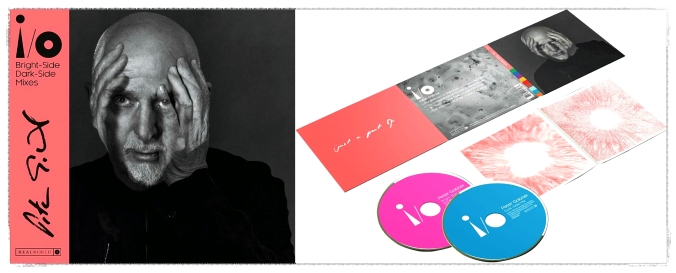
The 2 X CD package is the cheapest option of the physical formats and comes in a 3-panel cardboard Digisleeve and also includes a 32-page booklet. It can be obtained from Amazon UK for £17.99 though as always prices may fluctuate.

The 2 X CD & Blu Ray package comes in a 4-panel cardboard Digisleeve with a 32-page booklet (as I already mentioned) and considering you can get this for 28p more than the 2 X CD package it’s quite a bargain. It can still be obtained for £18.27 on Amazon UK but be aware of other sellers that are on there who can charge you up to £35 for it so you will have to scout around for it.

For vinyl lovers, it can be a very expensive game because although it might look like you are getting both mixes of the album being as it comes with 2 X 33+1⁄3 rpm 180 gram LP’s you only get the one mix (Bright Side). Most of the tracks have also been swapped around due to vinyl limitations. It also includes a 12-inch version of the 32-page booklet and you might be better off shopping around to obtain the best price. For example, Juno is charging around £34.99 whilst Amazon UK has it priced at £38.78.

The same deal can also be had from Juno for the (Dark Side) mix, unlike Amazon which is charging even more for this mix for some reason. However, they are priced below the retail price of £40 that Gabriel is charging at his own online store and his Bandcamp page. It’s also worth taking into consideration the price of postage and packaging and if you are a Prime member they still might be cheaper on Amazon.
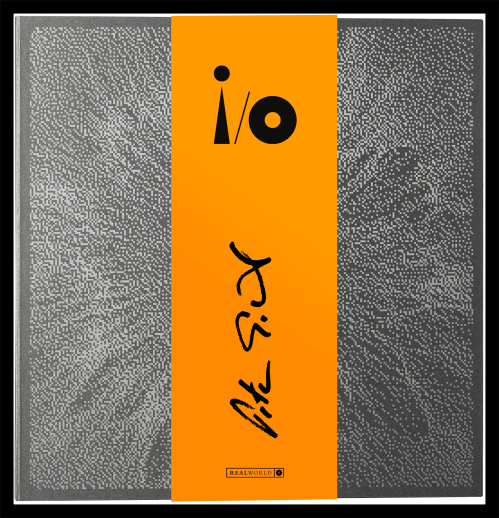
For those who want to go the whole HOG! Due to be released on the 8th of March this year is the Boxset which contains 4 LP’s and the 2 X CD & Blu Ray package. It also comes with a casebound book with expanded liner notes and a poster. It is available to preorder from Amazon UK for £123.99.
The Album In Review…
i/o by Peter Gabriel was released on the 1st of December 2023. The album contains 12 tracks sped over an overall playing time of 68 minutes and 9 seconds which is quite lengthy though perhaps expected considering the amount of time it took to get here. Upon its release, it met with good critical reviews and managed to hit number 1 on the UK album charts. It also managed to peak at number 2 in other European countries like Belgium, Germany and Switzerland.
Over the years of his solo career, Peter Gabriel has picked up an array of awards ranging from 3 Brit awards, 6 Grammies the Ivor Novello Award for Lifetime Achievement and no less than 13 MTV Video awards plus many more. In 2008 Time magazine named him one of the 100 most influential people in the world and he is noted to be one of rock’s most ambitious, innovative musicians and even picked up awards for his influence on generations of music makers. He has been inducted into the Rock and Roll Hall of Fame as a member of Genesis and as a solo artist.
I have been a longtime fan since his days with Genesis and got to see him live 3 times on his So, Secret World and Growing Up tours. My only regret is that I never got to see him live with Genesis because if the truth be told that is where he had the biggest influence on me and I still prefer the music he made with them in relation to his own the most. I guess it’s down to the progrock element that is associated with that band when he was with them which is something he left behind to go into more of a commercial direction and venture into the world of pop music.
You do get the occasional bit of PROG! here and there but nowhere near the amount that Steve Hackett injected in his solo career and he is really the only member of that band that stuck by his guns on that score. However, one also has to remember that their own individual influences reflect upon the music one makes and there is nothing wrong with trying to do things differently just like Genesis set out to do in 1970 with their second album Trespass.
To say there is anything really that different with this latest release that Gabriel has presented us with is not the case and basically that’s because he first started work on it back in 1995 and the majority of the material that was written for it was meant to be completed and hit the record stores back in 2004. However, as with anything he does he will not put it out till he thinks everything is right and he has hundreds of songs that are still not completed on that score.
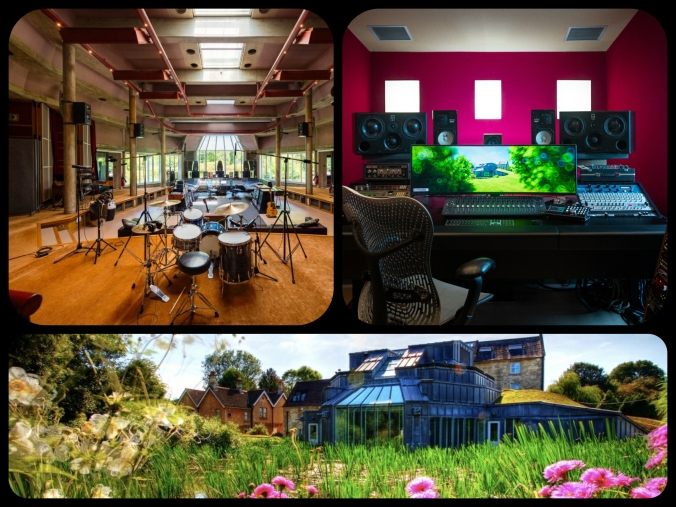 Real World Studios
Real World Studios
The majority of the recording took place at Gabriel’s own recording studio Real World in Wiltshire, England and at The Beehive in London between April 1995 and December 2022. A further six studios were also utilised two of which were also in London such as British Grove where the New Blood Orchestra was recorded and The Copper House was used for additional recording on “Four Kinds Of Horses”.
The other studios utilised were further afield such as the High Seas studio in Johannesburg, South Africa which was utilised to record the Soweto Gospel Choir. The Orphei Drängar Choir was recorded at Alfvénssalen studios in Uppsala, Sweden and additional recordings to “Love Can Heal” and “Live And Let Live” were done at Rexall Place in Edmonton, Canada and ArteSuono studios in Cavalicco, Italy respectively.
According to the form a total of 23 songs were recorded during these recording sessions and only 12 of them made it on the album. It was reportedly known that Gabriel had 130 songs in various stages that he recorded for the Album Up back in 2002 to which only 10 made the album. i/o was indeed intended to be released back in 2004 though his busy schedule with the Growing Up and Still Growing Up tours and many other projects had sidelined the project and did not give him enough time to complete the material until now.
It was around September and October of 2021 that Gabriel recorded the first of the band material for i/o calling on his regular musicians Tony Levin, David Rhodes and Manu Katche with Oli Jacobs and Katie May at the helm of the majority of the recording. He also called on Brian Eno to help out on some of the production side of things. He also called on three engineers to mix the album and we shall delve further into them in the next section as we take a look at the package contents.
Package Contents.

Although there are two CD’s in the package it was perhaps unnecessary and the reason why Gabriel decided to let two engineers do the stereo mixes of the album is really down to him admiring the work that both Mark Stent and Tchad Blake do. The differences between both mixes are very subtle and these are not remixes where things have been done differently and are perhaps more like the difference between day and night or the “Bright” and “Dark” side of the moon so to speak.
I am not going to be going into great detail regarding the differences between these stereo mixes simply because they are way too subtle to stand out from each other in any great detail. However, one might prefer one to the other or parts of this and that sort of thing. So let’s now dive into the package starting with the CD’s.
CD 1 (Bright-Side Mix).
The first CD contains what is known as the “Bright-Side” mix though in reality, it is the original mix and the first engineer Gabriel decided to go with which was done by Mark Stent. The 12 tracks on this disc come with an overall playing time of 68 minutes and 9 seconds which is the slightly shorter time slot out of the two CD’s that come in the package. This is down to the final track being shorter by 25 seconds which is really no big deal and not that much notable.
CD 2 (Dark-Side Mix).
The second CD comes with the same 12 tracks sped over an overall playing time of 68 minutes, 34 seconds and was mixed by Tchad Blake. Like the engineer who did the Surround mix he chose to utilise the extra 25 seconds of the last track on the album and the only real differences will be down to where he has placed the instruments in the mix and the levels that were applied for them.
You will have to do back-to-back A to B comparisons between both discs to see which mix you prefer although the end result will most likely leave you liking a little bit of this and a little bit of that about each mix and there are no major differences that will make any of the songs sound that much different as with a remix for example.
To give you a few examples having done some A to B comparisons the notable differences on the opening track “Panopticom” are on the intro where lesser weight and no reverb have been applied to Blake’s mix, he has also applied a lot more weight to the drums in relation to Stent’s mix. I actually prefer Stent’s mix out of the two here, though if you like a heavy-weight kick applied to the drums you may very well prefer Blake’s mix out of the two here.
The same can more or less be said for the second track “In The Court” and besides the heavier weight applied to the drums on Blake’s mix, you may also hear more of the scratches on the guitar strings over the first minute or so. In the intro to “Road to Joy” the vocals that sing the words “waking up the road to joy” which runs from 16 – 21 seconds have been omitted from Blake’s mix. With a track like “Four Kinds of Horses” and many of the others it might be much harder to distinguish any notable differences and if there are any here it is most likely applied to the vocals more than anything else. The extra 25 seconds on the final track “Live And Let Live” is merely where Stent decided to fade out the ending earlier.
I would like to say that the differences between Blake’s “Dark-Side” mix and Stent’s “Bright-Side” mix are like night and day where more weight has been applied to the drums to give it the thicker density of night but it’s not really the case on all tracks. It’s not as if they panned things differently either and the differences are far too subtle for me to prefer one mix over the other. At the end of the day, both engineers have done a good job but I don’t think it was that necessary to include two mixes of the album and like I said they are not remixes to have that many notable changes.

To be honest I have never been one for remixes myself however I can remember buying some of Gabriel’s remixes on 12″ singles on vinyl years ago and I did quite like them. “Quiet Steam” which was the B-Side of the 7″ single of “Digging In The Dirt” is quite a good example of a good remix and is vastly different to the original. So let’s now turn our attention to the Blu Ray which includes another mix and a much tougher challenge one could say.
Blu Ray.
The Blu-Ray not only comes with a surround mix but also contains the “Bright-Side” and “Dark-Side” mixes although they are not in high-resolution they still may render the CD’s in this package pointless unless you are one of those who likes to take them out and pop them in your car to listen to whilst driving along. The Dolby Atmos mix was engineered by Hans-Martin Buff and they are calling this the “In-Side” mix. It’s also worth noting that this particular mix has extra musicians contributing to it though mostly the engineer himself.

The Blu-Ray’s main menu displays the album cover very well and everything is in one place making it fast and smooth to navigate yourself along. By default, the audio is set to Dolby Atmos and if like myself that is your preferred choice it’s just a simple case of hitting “Start” at the top of the menu. The Stereo mixes are LPCM 48/24 whilst the Dolby Atmos mix is Dolby True-HD 48/24.
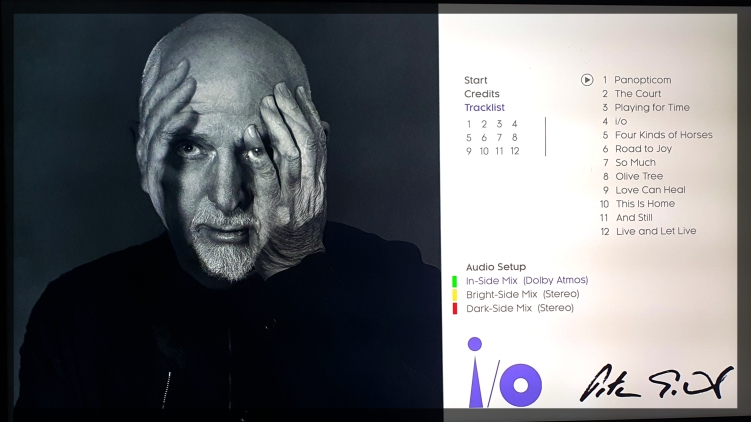
The “Tracklist” gives you two options to choose a desired track to play, you can either simply click on a number or the word itself and a menu pops up displaying all the tracks. Likewise, a box pops up to display the “Credits” when you click on that.
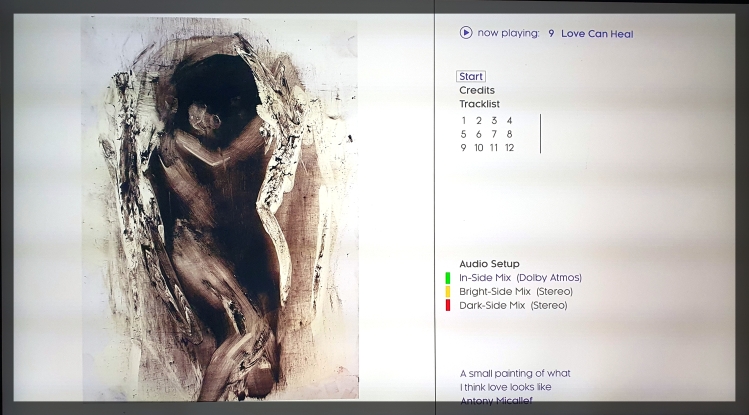
When playing a track from the album it displays a piece of artwork and the name of the artist that Gabriel commissioned to do for each track. It’s not the first time he has done this either and he did the same thing with the albums US and UP released back in 1992 and 2002 respectively. The Blu-ray was authorised by Pure Audio at MSM-Studios in Berlin, Germany and overall a quality job has been done here.
Dolby Atmos (In-Side Mix).
The surround mix will always present one with a tougher challenge having more channels to place the instrumentation and getting the right balance for an immersive mix especially when working with 7.1 in which all Atmos mixes are made from. Regardless of if you listen to the mix in Atmos or 7.1, I can tell you that this mix is to die for and it’s good to see more engineers are doing a GRAND! job in this field and I take my hat off to Hans-Martin Buff because he really had done a super job of it.
One of my personal tracks where I think he’s done the best job is on “In The Court” in which he also lends a hand with the percussion side of things along with Brian Eno and Katie May. The mix was done in the red room at Real World Studios and the 3D treatment he gave to the percussion that is placed in the rear channels sounds amazing, he really has done a top job all around and his surround mix easily merits a 10 out of 10 in my book and one could say that it puts you on the road to joy.
Musicians & Credits…

Words and Music by Peter Gabriel. All songs were Produced by Peter Gabriel except for “Four Kinds Of Horses” Produced by Peter Gabriel & Richard Russell and “Road To Joy” Produced by Peter Gabriel & Brian Eno. Recorded at Real World, British Grove, The Copper House, High Seas, Alfvénssalen, Rexall Place and ArteSuono studios between April 1995 and December 2022.
All Songs Recorded by Oli Jacobs & Katie May except for “Road To Joy”, “This Is Home” and “Live And Let Live” by Oli Jacobs, Katie May and Dom Shaw. Additional Engineering on “Playing For Time” by Faye Dolle. John Foyle on “Four Kinds Of Horses”. Dom Shaw on “i/o” and Faye Dolle & Stefano Amerio on “Live And Let Live”. Orchestral Engineering by Lewis Jones with Assisting Engineers Tom Coath & Luie Stylianou. Stereo mixes by Mark Stent & Tchad Blake. Dolby Atmos mix by Hans-Martin Buff. Blu-ray Authoring by Pure Audio at MSM-Studios. Cover Design by Marc Bessant. Photography by Nadav Kander.
Musicians.
Peter Gabriel: Vocals – Keyboards – Piano – Synths – Percussion – Programming.
Tony Levin: Basses
David Rhodes: Electric & Acoustic Guitars.
Manu Katché: Drums (Tracks 1, 2, 3, 4, 6, 8, 10, 12).
Melanie Gabriel: Backing Vocals (Tracks 2, 5, 7, 9, 12).
Additional Musicians.
Brian Eno: Synths (Tracks 1, 2, 10, 12) – Percussion (Tracks 1, 2, 5, 6). Manipulated Guitar & Ukelele (Track 6).
Oli Jacobs: Synths (Tracks 1, 3, 4, 10) – Piano (Track 5) – Programming (Tracks 1, 2, 4, 10, 12).
Katie May: Acoustic Guitar (Tracks 1, 4) – Electric Guitar (Track 4) – Percussion (Tracks 2, 10, 12) – Rhythm Programming (Track 5).
Richard Evans: D Whistle (Track 4) – Mandolin (Track 8).
Tom Cawley: Piano (Track 3).
Josh Shpak: Trumpet (Tracks 6, 8).
Paolo Fresu: Trumpet (Track 12).
Evan Smith: Saxophone (Track 8).
Angie Pollock: Synths (Track 9).
Don-E: Bass Synth (Track 6).
Hans-Martin Buff: Additional Synths (Track 6) – Additional Percussion (Track 6).
Ron Asian: Additional Synths (Track 6).
Linnea Olsson: Cello & Backing Vocals (Track 9).
Oli Middleton: Percussion (Track 10).
Richard Russell: Filtered Percussion (Track 5).
Ríoghnach Connolly: Backing Vocals (Tracks 1, 9, 10).
Jennie Abrahamson: Backing Vocals (Track 9).
Richard Chappell: Programming (Tracks 1, 2, 4, 8, 11, 12).
Steve Gadd: Brush Loop (Track 12).
Other Musicians.
Orchestra Conducted by John Metcalf: (Tracks 2, 3, 7, 8, 11, 12). Soweto Gospel Choir directed and arranged by Bongani (Honey) Ncube: (Tracks 4, 6, 12). Orphei Drängar Choir Conducted by Cecilia Rydinger: (Track 10).
The Album Tracks In Review…
The album title i/o stands for “input/output” which is perhaps more commonly associated with the terminals on HiFi components and other devices only in this case it is associated with the stuff that goes in and out of the body. It is also the name of one of the many moons that surround the planet Jupiter which is why Gabriel decided to release a track on every full and new moon. It’s not the first time he has done something like this either and he originally opened the Full Moon Club on his website over a couple of decades ago and has now reopened it up for this new release.
Much of the lyrical content focuses on themes or topics about life, death and sex as well as touching on politics and political issues Gabriel is now at that age where he knows his time left is very limited. He has also been involved in science projects and he believes that when one dies the spirit will find its way into something else such as a tree for example. Considering he is at the ripe old age of 73 his voice is still very much intact and he’s always been one of my personal favourite singers.
I should also add that a few more additions were added to the “In-Side” and “Bright-Side” mixes which I will point out as I go through each track, so let’s now dive into the album to see how it all pans out.
Track 1. Panopticom.
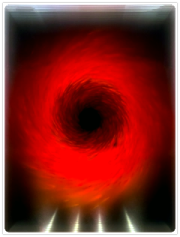 The first of the singles to be released on The Wolf Moon from the album back in January 2023 which takes its name or nickname from the “Old Farmer’s Almanac” because wolves were likely to be heard howling in midwinter. To be honest I was not aware that full moons had names and you learn something every day even at my age. The lyrics are inspired by the idea of an infinitely expandable accessible data globe which is a project that was spearheaded by Gabriel himself and partially inspired by the work of three organizations, Forensic Architecture, Bellingcat and the Gabriel co-founded pioneering human rights organisation WITNESS. It’s a bit like Big Brother is watching you sort of thing.
The first of the singles to be released on The Wolf Moon from the album back in January 2023 which takes its name or nickname from the “Old Farmer’s Almanac” because wolves were likely to be heard howling in midwinter. To be honest I was not aware that full moons had names and you learn something every day even at my age. The lyrics are inspired by the idea of an infinitely expandable accessible data globe which is a project that was spearheaded by Gabriel himself and partially inspired by the work of three organizations, Forensic Architecture, Bellingcat and the Gabriel co-founded pioneering human rights organisation WITNESS. It’s a bit like Big Brother is watching you sort of thing.
Musically it’s one of the more uptempo songs on the album down to its uplifting chorus and borrows bass lines and the odd guitar riff from “Digging In The Dirt” that was written and appeared on his US album back in 1992. It’s perhaps not on par with that particular song and not the only song on the album that borrows those lines and riffs but nevertheless, it is quite a catchy little number. It’s also worth noting that Stuart McCallum who is not listed among the additional musicians contributes electric and acoustic guitar on the “In-Side” mix only.
Track 2. The Court.
 A song about justice or access to justice partially inspired by the work of NAMATI, a charity “dedicated to putting the power of law in the hands of people. I quite like how Gabriel put the words into context with this song and I particularly like the percussion elements that were utilised especially on the surround or “In-Side” mix. It’s also worth noting that the engineer Hans-Martin Buff contributed extra percussion to the surround mix and this is a song that is perhaps built around the drums and percussion. Musically it fits right in the pocket of what one would expect from Peter Gabriel and the use of the orchestration and piano are very well utilised in taking it somewhere else.
A song about justice or access to justice partially inspired by the work of NAMATI, a charity “dedicated to putting the power of law in the hands of people. I quite like how Gabriel put the words into context with this song and I particularly like the percussion elements that were utilised especially on the surround or “In-Side” mix. It’s also worth noting that the engineer Hans-Martin Buff contributed extra percussion to the surround mix and this is a song that is perhaps built around the drums and percussion. Musically it fits right in the pocket of what one would expect from Peter Gabriel and the use of the orchestration and piano are very well utilised in taking it somewhere else.
It’s one of my favourite tracks on the album, it may even be my favourite because it’s not overcooked like some of the songs on the album and fits perfectly into the shorter time slot that was allocated for it. The photograph that is associated with it is also one of the more interesting pieces of art methinks.
Track 3. Playing For Time.
 It’s time to bring things down a bit to a more sombre level with a piano track sort of like how he did with “Father, Son” on the Soundtrack album OVO he did back in 2000, only this uses orchestration instead of brass and the piano is played by Tom Cawley. It’s a song that was first aired live back in 2012 on his Back to Front tour that stretched till 2014 and was used to open most of the shows. Cawley also played the piano to it then and he is very much part of the New Blood Orchestra, the song also had different titles back then such as “O But” and later “Daddy Long Legs” and the title we now have is much more fitting to the words that were also later developed.
It’s time to bring things down a bit to a more sombre level with a piano track sort of like how he did with “Father, Son” on the Soundtrack album OVO he did back in 2000, only this uses orchestration instead of brass and the piano is played by Tom Cawley. It’s a song that was first aired live back in 2012 on his Back to Front tour that stretched till 2014 and was used to open most of the shows. Cawley also played the piano to it then and he is very much part of the New Blood Orchestra, the song also had different titles back then such as “O But” and later “Daddy Long Legs” and the title we now have is much more fitting to the words that were also later developed.
The lyrics very much reflect upon how we all are playing for time and we get to realise that more perhaps when we get older and our time is running out so to speak. Whilst I think it a good song with very good lyrics musically it is perhaps overcooked and did not need to go on for the 6 minutes we get here.
Track 4. i/o.
 The album’s self-titled track is another catchy number like the opening track is one of the more uptempo tracks on the album. The subject behind the lyrical content pertains to how we are made up of parts of everything and how everything connects to one another sort of thing. On the “Bright-Side” and “In-Side” mixes only Katie May also contributes electric guitar besides acoustic guitar, additional synths and percussion, Buff also adds sound effects and percussion on the “In-Side” mix only. Whatever is going in and out here is pretty much all good stuff and once again it is what one would expect from a good Peter Gabriel song.
The album’s self-titled track is another catchy number like the opening track is one of the more uptempo tracks on the album. The subject behind the lyrical content pertains to how we are made up of parts of everything and how everything connects to one another sort of thing. On the “Bright-Side” and “In-Side” mixes only Katie May also contributes electric guitar besides acoustic guitar, additional synths and percussion, Buff also adds sound effects and percussion on the “In-Side” mix only. Whatever is going in and out here is pretty much all good stuff and once again it is what one would expect from a good Peter Gabriel song.
Track 5. Four Kinds of Horses.
 This is a song that was originally intended for Richard Russell’s project “Everything is Recorded” back in 2015 in which he asked Gabriel if he would write a song for it, he also helped out on the production. Although Gabriel put a few chords a melody and some words to it back then it never worked out for that particular project and after further development from them both it wound up on this album instead. It is one of the stronger tracks on the album and the subject matter behind the lyrics was inspired by the 2006 film directed by Hany Abu-Assad entitled “Paradise Now” which shows how terrorists and terrorism can also be combined with religion. I suppose in the way that the words have been put into context they could also quite easily refer to political matters.
This is a song that was originally intended for Richard Russell’s project “Everything is Recorded” back in 2015 in which he asked Gabriel if he would write a song for it, he also helped out on the production. Although Gabriel put a few chords a melody and some words to it back then it never worked out for that particular project and after further development from them both it wound up on this album instead. It is one of the stronger tracks on the album and the subject matter behind the lyrics was inspired by the 2006 film directed by Hany Abu-Assad entitled “Paradise Now” which shows how terrorists and terrorism can also be combined with religion. I suppose in the way that the words have been put into context they could also quite easily refer to political matters.
The dramatisation behind the lyrics put me in mind of “Family Snapshot” which was about the assassination of President John Fitzgerald Kennedy “JFK” on his third album back in 1980 they call these days Melt instead of its original title of Peter Gabriel 3. Although musically it’s perhaps leaning more towards “San Jacinto” from Peter Gabriel 4 in that it utilises rhythm and sequencing programming to which Brian Eno lent a hand on the rhythm processing. You also get the added bonus of an electric bee sound effect thrown in by Buff on the “In-Side” mix.
This is a 6-minute song that is not overcooked and the orchestration also lends very well to it, the chosen artwork of the broken glass entitled “SNAP” by Cornelia Parker fits the lyrics to a tee methinks. It’s also my personal favourite track on the album and merits the album’s TOP SPOT AWARD!
Track 6. Road To Joy.
 Another of the uptempo songs on the album with a bit more energy and this is a song that has a strong resemblance to “Kiss That Frog” once again from his 1992 album Us. As a matter of fact, the resemblance is so that strong it could even be seen as an alternative version or mix with a different set of lyrics, it even has me singing the words to that song. Gabriel co-produced the song with Eno and you get an extra bit of percussion thrown in from Buff on the “Bright-Side” and “In-Side” mixes.
Another of the uptempo songs on the album with a bit more energy and this is a song that has a strong resemblance to “Kiss That Frog” once again from his 1992 album Us. As a matter of fact, the resemblance is so that strong it could even be seen as an alternative version or mix with a different set of lyrics, it even has me singing the words to that song. Gabriel co-produced the song with Eno and you get an extra bit of percussion thrown in from Buff on the “Bright-Side” and “In-Side” mixes.
According to Wikipedia, this was one of the last tracks that emerged for the album and was originally conceived back in 2000 when Gabriel was working on the OVO Soundtrack album. I think you would have to be cloth-eared to not recognise this song was not conceived well before then and not notice the resemblance. I mean we even get a splash of water at the end for god’s sake 😁😁😁.
Track 7. So Much.
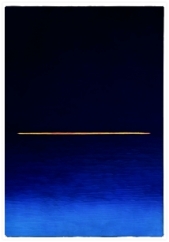 It’s time to simmer things down once again like the third track on the album with a simplistic song constructed on the piano and here he is backed up by Tony Levin’s bass, David Rhodes 12-string guitar and some orchestration. It’s very much a song about mortality and getting old and how time is so short that we don’t have enough of it to fit everything we want into it and there is always so much more we can so to speak. It’s a pleasant enough song and speaks to me more than Henry Hudson’s piece of art he titled “Somewhere Over Mercia”, but I suppose you have to draw the line somewhere. It’s also one of those that does not have any other elements added to the mix.
It’s time to simmer things down once again like the third track on the album with a simplistic song constructed on the piano and here he is backed up by Tony Levin’s bass, David Rhodes 12-string guitar and some orchestration. It’s very much a song about mortality and getting old and how time is so short that we don’t have enough of it to fit everything we want into it and there is always so much more we can so to speak. It’s a pleasant enough song and speaks to me more than Henry Hudson’s piece of art he titled “Somewhere Over Mercia”, but I suppose you have to draw the line somewhere. It’s also one of those that does not have any other elements added to the mix.
Track 8. Olive Tree.
 The lyrical content of this song follows the same pattern as the album’s self-titled track in the way things are connected, it’s also worth noting that, unlike all the other artwork that Gabriel picked out to associate with each track, the artwork we have here done by Barthélémy Toguo was created specifically for this track. Musically this is perhaps something more new and it took me a while to get used to it and to actually like it. From the many reviews I glanced at many cited it as their favourite track on the album though I have to confess it’s not mine or do I consider it as a contender for the album’s TOP SPOT! Buff contributes additional electric guitar to the “In-Side” mix.
The lyrical content of this song follows the same pattern as the album’s self-titled track in the way things are connected, it’s also worth noting that, unlike all the other artwork that Gabriel picked out to associate with each track, the artwork we have here done by Barthélémy Toguo was created specifically for this track. Musically this is perhaps something more new and it took me a while to get used to it and to actually like it. From the many reviews I glanced at many cited it as their favourite track on the album though I have to confess it’s not mine or do I consider it as a contender for the album’s TOP SPOT! Buff contributes additional electric guitar to the “In-Side” mix.
Track 9. Love Can Heal.
 Perhaps the most simplistic track on the album yet one of the most effective and love really can heal. It’s a song that Gabriel wrote a while back, he also debuted it live at the Rock, Paper, Scissors tour in North America back in 2016. He also dedicated the song to the British MP Jo Cox who was brutally murdered by an extremist and someone that he had met at a leadership conference. I detect a bit of a slowed-down version of The Police song “De Do Do Do, De Da Da Da” when I listen to this song it also has a nice little touch of the Orient to boot. The way Melanie Gabriel’s voice works on the chorus is almost like a duet and the solo cello played by Linnea Olsson fits in like a glove.
Perhaps the most simplistic track on the album yet one of the most effective and love really can heal. It’s a song that Gabriel wrote a while back, he also debuted it live at the Rock, Paper, Scissors tour in North America back in 2016. He also dedicated the song to the British MP Jo Cox who was brutally murdered by an extremist and someone that he had met at a leadership conference. I detect a bit of a slowed-down version of The Police song “De Do Do Do, De Da Da Da” when I listen to this song it also has a nice little touch of the Orient to boot. The way Melanie Gabriel’s voice works on the chorus is almost like a duet and the solo cello played by Linnea Olsson fits in like a glove.
The painting was done by Antony Micallef and is very impressive, so impressive that I think it would have made a great album cover. Aardman Animation also did a nice job with it in the video above. It’s another song that works wonders in surround and besides Buff’s contribution of a hairy drum to the “In-Side” mix Faye Dolle also contributes backing vocals to this mix. It’s another of my personal favourite tracks and a strong contender for the album’s TOP SPOT AWARD!
Track 10. This Is Home.
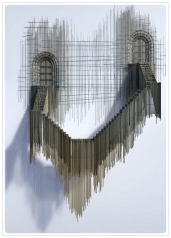 Another of the uptempo tracks on the album and the bass and drums on this one fit right in the groove and pocket. Gabriel was inspired by some of the great Tamla Motown rhythm sections and wanted to create it in a modern way with the use of tambourine and handclaps. Buff also contributes extra tambourine and guitar to the “In-Side” mix and I tend to find the backbeat once again verging on the lines of “Digging In The Dirt“, especially towards the end of the song. Eno plays the dreamy piano on the track and it also features the Orphei Drängar Choir conducted by Cecilia Rydinger who can only really faintly be heard unlike the Blind Boys of Alabama who featured on “Sky Blue” from the Up album back in 2002. It is however another of the better tracks on the album.
Another of the uptempo tracks on the album and the bass and drums on this one fit right in the groove and pocket. Gabriel was inspired by some of the great Tamla Motown rhythm sections and wanted to create it in a modern way with the use of tambourine and handclaps. Buff also contributes extra tambourine and guitar to the “In-Side” mix and I tend to find the backbeat once again verging on the lines of “Digging In The Dirt“, especially towards the end of the song. Eno plays the dreamy piano on the track and it also features the Orphei Drängar Choir conducted by Cecilia Rydinger who can only really faintly be heard unlike the Blind Boys of Alabama who featured on “Sky Blue” from the Up album back in 2002. It is however another of the better tracks on the album.
Track 11. And Still.
 The longest track on the album weighing in at 7 minutes and 44 seconds and this one has quite a BEATLESESQUE! feel about it a bit like “The Magical Mystery Tour” sort of thing and uses orchestration. Having already written a song for his father several years back “Father, Son“, this one was done for his mother only it took much longer to write and unlike his father, she never got to hear the song. Nevertheless, all good intentions are there and it is quite a good song but unfortunately, another one that I do feel is a bit overcooked and did not necessarily need to go on this long. Buff contributes claps and additional keynotes to the “In-Side” mix.
The longest track on the album weighing in at 7 minutes and 44 seconds and this one has quite a BEATLESESQUE! feel about it a bit like “The Magical Mystery Tour” sort of thing and uses orchestration. Having already written a song for his father several years back “Father, Son“, this one was done for his mother only it took much longer to write and unlike his father, she never got to hear the song. Nevertheless, all good intentions are there and it is quite a good song but unfortunately, another one that I do feel is a bit overcooked and did not necessarily need to go on this long. Buff contributes claps and additional keynotes to the “In-Side” mix.
Track 12. Live and Let Live.
 The final track that brings the album to a close is a bit like “Olive Tree” in that it is perhaps something a bit new for Gabriel to do although the lyrical content that is striving towards peace, love and forgiveness is perhaps not. Not sure how the artwork relates to this song and is quite an odd choice methinks. The Soweto Gospel Choir are put to good use along with the orchestration, Buff applies additional claps, guitar and summer sounds to the “In-Side” mix. Although the lyrical side of things is all well and good and I don’t think it’s overcooked, I cannot say I am that fond of this song and with this album being as long as it is, it may have been better left off the album.
The final track that brings the album to a close is a bit like “Olive Tree” in that it is perhaps something a bit new for Gabriel to do although the lyrical content that is striving towards peace, love and forgiveness is perhaps not. Not sure how the artwork relates to this song and is quite an odd choice methinks. The Soweto Gospel Choir are put to good use along with the orchestration, Buff applies additional claps, guitar and summer sounds to the “In-Side” mix. Although the lyrical side of things is all well and good and I don’t think it’s overcooked, I cannot say I am that fond of this song and with this album being as long as it is, it may have been better left off the album.
Summary & Conclusion…
To sum up and conclude my review of i/o by Peter Gabriel. The first thing I would say is that after all these years it is a most welcoming release and I am sure one that many would have been waiting for in great anticipation. However, the way that Gabriel promoted the album by releasing every track from it before the record hit the shelves so to speak, may very well have dampened any of the anticipation about it all unless like myself you were waiting to get your hands on the surround mix. Speaking of the surround mix surprisingly this is only the second of his studio albums to come with one, the first being UP back in 2002 which was also released on SACD and DTS DVD-A.
i/o is very much an album where most of its material sits within the making of US and UP and it perhaps sits more with that period than today in terms of presenting us with anything new in many respects. It’s also an album that is on the lengthy side of things and really needed to be shaved down by at least a third of its overall playing time, I mean do we really need two piano tracks like “Father, Son” for example and was it really necessary to make some of the tracks that long. Come to think of it did we really need a “Bright-Side” and a “Dark-Side” mix?
Having stripped back some of the negative points about the release let’s get back to the two-part question of “Is it any good and how does it compare to his previous albums from the past?” that I presented in my introduction.
In answer to the first part, I still think it’s a relatively good album even if things could have been done to make it work better. On the positive side, the production values are very good and of a high standard. Hans-Martin Buff’s Dolby Atmos mix is superb and on par with Steven Wilson which does make this album more enjoyable. The very fact that we have new material certainly makes this more of a welcoming release in relation to his last two albums Scratch My Back and New Blood. However, in answer to my second part of the question when comparing this album to the likes of Peter Gabriel 1, 2, 3, 4, So, Us and UP. I would place this one at the bottom of the pile.
At the end of the day the album i/o still has its merits and is what one would expect from Peter Gabriel and is still worthy of adding to your collection. My personal highlights from the album are “Four Kinds Of Horses“, “Love Can Heal” and “The Court“. I would also add “Panopticom“, “i/o” and “This Is Home” to the equation and it’s perhaps slightly more than a half decent album.
Good Stuff Going In And Out In Surround Heaven…
The CD Tracklisting is as follows:
CD 1. (Bright-Side Mix).
01. Panopticom. 5:17.
02. The Court. 4:21.
03. Playing For Time. 6:18.
04. i/o. 3:53.
05. Four Kinds Of Horses. 6:47.
06. Road To Joy. 5:22.
07. So Much. 4:52.
08. Olive Tree. 6:01.
09. Love Can Heal. 6:02.
10. This Is Home. 5:04.
11. And Still. 7:44.
12. Live And Let Live. 6:48.
CD 2. (Dark-Side Mix).
01. Panopticom. 5:17.
02. The Court. 4:20.
03. Playing For Time. 6:18.
04. i/o. 3:53.
05. Four Kinds Of Horses. 6:47.
06. Road To Joy. 5:25.
07. So Much. 4:51.
08. Olive Tree. 6:00.
09. Love Can Heal. 6:03.
10. This Is Home. 5:04.
11. And Still. 7:44.
12. Live And Let Live. 7:13.